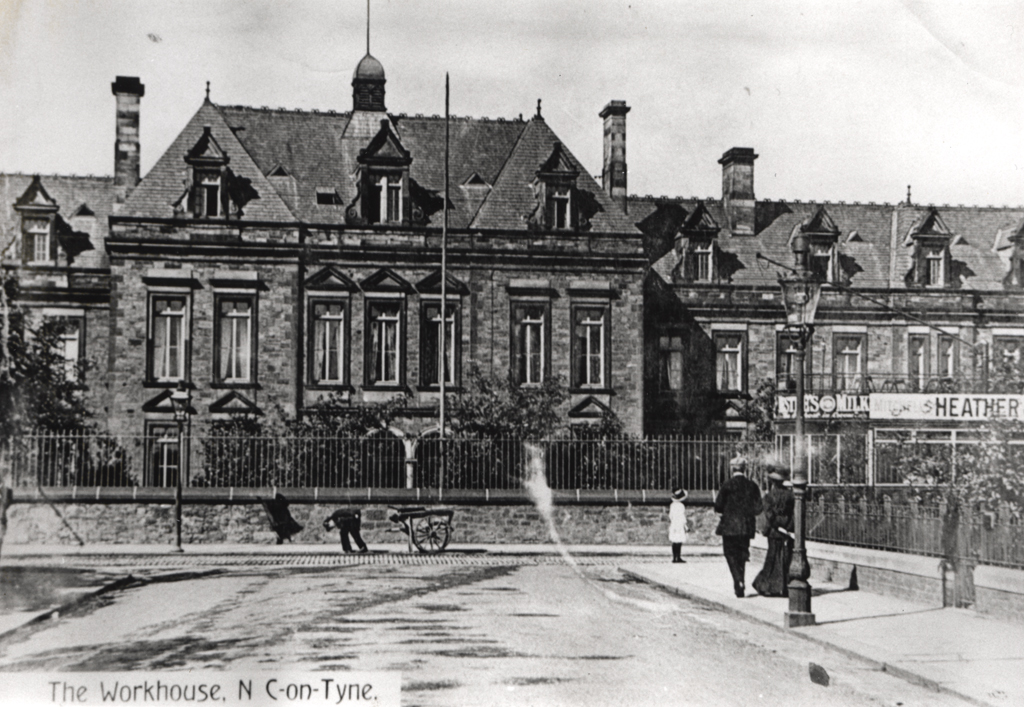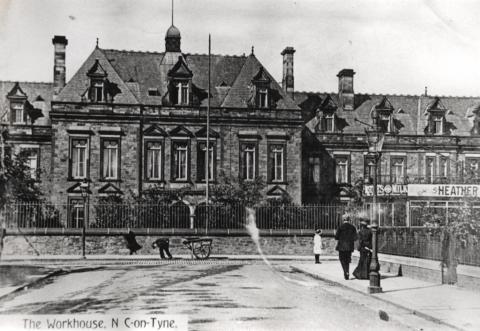Tyne and Wear HER(6342): Westgate Road, Union Workhouse (General Hospital) - Details
6342
Newcastle
Westgate Road, Union Workhouse (General Hospital)
Fenham
NZ26SW
Health and Welfare
Workhouse
Workhouse
POST MEDIEVAL
Victorian 1837 to 1901
Extant Building
Newcastle upon Tyne Poor Law Union formally came into existence on 26 September 1836. Its operation was overseen by an elected Board of Governors, 34 in number, representing its 11 constituent parishes and townships. The average annual poor-rate expenditure for 1834-1856 had been ÂŁ15,049 or 5s 6d per head of population. In 1839 the Board of Governors started buying land to accommodate a new workhouse for the City, which would replace the four parish Poor Law Houses (HER 6870, 11340, 16405, 16406) in Newcastle. Part of this is shown on Christie's map of 1870. By 1844 the first building, the administration block, had been built. The workhouse buildings were built in the south-east corner of the site at the junction of Westgate Road and Brighton Grove. They included a dining hall, laundry, bakehouse, workshops, school, sick wards, lying-in ward and imbecile's ward. Men were housed in the western side of the workhouse, women in the east. In 1868 work started on a new hospital on the west side of the site. A foundation stone was laid on 9th December by Mr Milvain, vice-chairman of the Board of Guardians. The building cost ÂŁ16,302. It was opened on 7th December 1870 by the Board's chairman, Thomas Ridley. The hospital was two storeys high and was arranged in a U-shape enclosing a quadrangle of lawn. There were eight wards and three semi-basement wards on the north and east sides where the slope of the land made the foundations lower. The building was separated into men on the west and women on the east. A separate children's block was erected between the workhouse and the 1868 hospital. Boys had a school, dayroom, playground and dormitories in the northern half of the building, girls were in the south. There was a swimming bath north of the school. In 1882 the small entrance lodge was replaced by a three storey building with central archway. The lodge contained waiting rooms and receiving wards on the ground floor, a three roomed residence above and store rooms on the top floor. In 1902 a separate itch and venereal ward was erected west of the workhouse. In 1902 the children were moved to the Union's new cottage homes at Ponteland. The building was then used for the workhouse's aged and infirm inmates. The dining room was converted into a chapel. The first vagrants' ward was at the west of the site, north-west of the hospital. It later became an isolation ward. More vagrants' wards were added along the road to St. Nicholas Cemetery. In 1914 the Union was reconstituted as Newcastle upon Tyne Poor Law Parish. During the First World War, the military took over the workhouse buildings for the treatment of venereal diseases in soldiers. From 1921 the hospital was run separately from the workhouse and became known as the Wingrove Hospital. In 1930 after the council took over the site, it was renamed Newcastle General Hospital. The Public Assistance facilities were at that time based in the workhouse part of the site, and this became known as Elswick Grange Institution. In 1939 the western part of the entrance building and the archway were taken down in case of bombing. In 1948 the whole site was brought together still under the name Newcastle General Hospital.
The former workhouse buildings were recorded in 2011 in advance of demolition. A small portion of wall survives as a boundary towards the south-eastern corner of the site on the west side of Brighton Grove (2023).
422920
564510
NZ422920564510
1st edition Ordnance Survey map; Thomas Oliver, 1844, Historical and Descriptive Reference to the Public Buildings on the Plan of the Borough of Newcastle upon Tyne and Gateshead; George Hurrell and George P Harlan, 1966, The History of Newcastle General Hospital; various records in Tyne and Wear Archives including apprenticeship indentures 1808-1927, births register 1840-1923, register of lunatics 1865-1909, children's emigration papers 1922-29, register of infants received for reward 1902-36; Peter Higginbotham, 2014, The Workhouse, the story of an institution, www.workhouses.org.uk/NewcastleUponTyne/; CgMs Consulting, 2010, The campus for ageing and vitality and Tesco food store, Newcastle General Hospital, Newcastle upon Tyne - Archaeological Statement; Heaton History Group, 2015, www.heatonhistorygroup.org/2015/04/17/newcastles-war-hospitals

